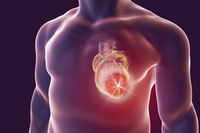In the same section
- Accueil
- EN
- Research
- Research projects
- Fédération Wallonie-Bruxelles
- "Actions de recherche concertées" (ARC)
-
Share this page
"CODIFy" research project (ARC program)
Fibrosis: integration of mechanical cues in cardiac remodelling

This project will study the contribution of force distribution in fibrosis, both in vitro and in animal models of myocardial remodelling. To study this problem in vitro, Nicoals Baeyens recently developed a new methodology in which primary cardiac fibroblasts, suspended in 3D fibrin gels, replace the fibrin with tensed cell-derived matrix over about a week, mimicking the process at stake during myocardial infarction.
Spokesperson
Nicolas BAEYENS
Physiology and Pharmacology Laboratory
Faculty of Medicine
